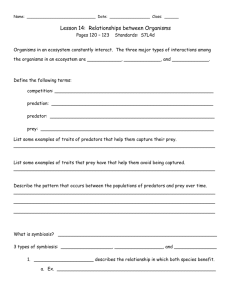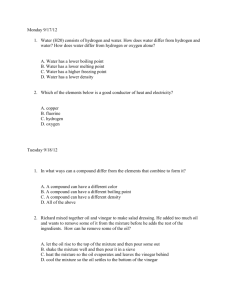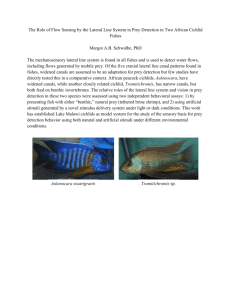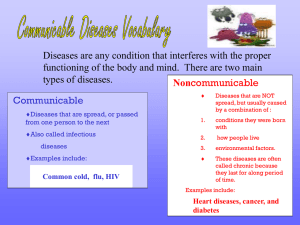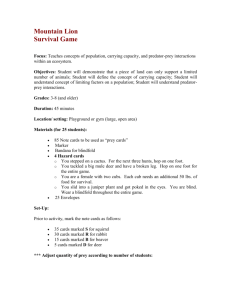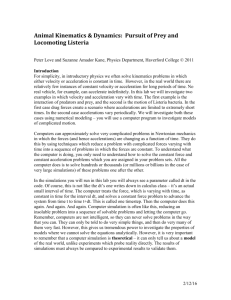25 Points Name: Period: Symbiosis and Relationships between
advertisement
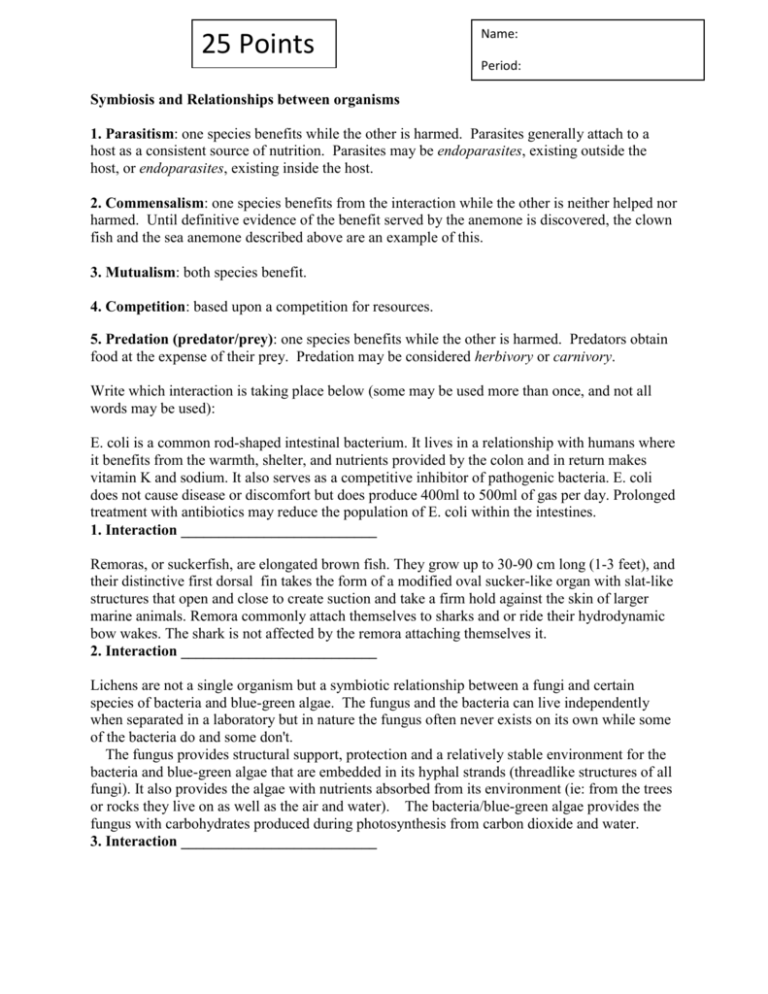
25 Points Name: Period: Symbiosis and Relationships between organisms 1. Parasitism: one species benefits while the other is harmed. Parasites generally attach to a host as a consistent source of nutrition. Parasites may be endoparasites, existing outside the host, or endoparasites, existing inside the host. 2. Commensalism: one species benefits from the interaction while the other is neither helped nor harmed. Until definitive evidence of the benefit served by the anemone is discovered, the clown fish and the sea anemone described above are an example of this. 3. Mutualism: both species benefit. 4. Competition: based upon a competition for resources. 5. Predation (predator/prey): one species benefits while the other is harmed. Predators obtain food at the expense of their prey. Predation may be considered herbivory or carnivory. Write which interaction is taking place below (some may be used more than once, and not all words may be used): E. coli is a common rod-shaped intestinal bacterium. It lives in a relationship with humans where it benefits from the warmth, shelter, and nutrients provided by the colon and in return makes vitamin K and sodium. It also serves as a competitive inhibitor of pathogenic bacteria. E. coli does not cause disease or discomfort but does produce 400ml to 500ml of gas per day. Prolonged treatment with antibiotics may reduce the population of E. coli within the intestines. 1. Interaction __________________________ Remoras, or suckerfish, are elongated brown fish. They grow up to 30-90 cm long (1-3 feet), and their distinctive first dorsal fin takes the form of a modified oval sucker-like organ with slat-like structures that open and close to create suction and take a firm hold against the skin of larger marine animals. Remora commonly attach themselves to sharks and or ride their hydrodynamic bow wakes. The shark is not affected by the remora attaching themselves it. 2. Interaction __________________________ Lichens are not a single organism but a symbiotic relationship between a fungi and certain species of bacteria and blue-green algae. The fungus and the bacteria can live independently when separated in a laboratory but in nature the fungus often never exists on its own while some of the bacteria do and some don't. The fungus provides structural support, protection and a relatively stable environment for the bacteria and blue-green algae that are embedded in its hyphal strands (threadlike structures of all fungi). It also provides the algae with nutrients absorbed from its environment (ie: from the trees or rocks they live on as well as the air and water). The bacteria/blue-green algae provides the fungus with carbohydrates produced during photosynthesis from carbon dioxide and water. 3. Interaction __________________________ Lions usually hunt at night, alone, or in groups. Typically, a lion hunting alone will slowly and silently stalk its prospective victim, trying not to be seen, until it is about 30 m (about 98 ft) away. Then with a burst of speed, the lion will run toward the prey, grab it, and throw it to the ground. The lion kills the prey by biting the back of the animal’s neck with sharp canine teeth or by holding the prey's throat in its jaws until the animal suffocates. If, during a hunt, the prey detects the lion's presence and starts to run, the lion gives up. Although lions are capable of high speed over short distances, they do not have the endurance to chase down an escaping animal. Their preferred prey are large hoofed mammals, such as zebras and wildebeests, but they will go after small hares as well as huge giraffes. 4. Interaction __________________________ Adult flukes are purple-gray in color, flat, elongate, oval, and look like "bloodsuckers" or "leeches". When found while cutting open or slicing liver, they resemble a blood clot and are surrounded by a thick black-grey discharge. The flukes vary in size from 15-30mm wide by 30100mm long by 2-5mm thick. Animals infected with the adult fluke may be healthy or be in poor condition, appearing drowsy, depressed, with poor appetite. 5. Interaction __________________________ Now look at the organisms on the other page. Make up a relationship for each category below. Cut and past the organisms out under the column, then write a brief explanation on what is going on between your chosen creatures. You can be creative, but it has to make sense. MUTUALISM PARASITISM COMMENSALISM PREDATOR-PREY COMPETITION Explanation Explanation Explanation Explanation Explanation

